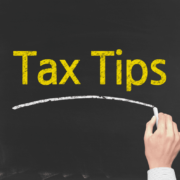Higher Capital Gain Rates Brings Interest in Opportunity Zone Funds
- Discover potential tax changes.
- Learn about possible capital gain rate increases.
- What is a Qualified Opportunity Fund?
- Learn how QOFs can help you defer capital gains.
- Discover additional tax benefits of QOFs.
The U.S. Treasury recently released the Biden administration’s 2022 Fiscal Year Budget. It includes a general explanation of the administration's 2022 revenue proposals. We commonly refer to the publication as the “Green Book” and it outlines the Biden administration’s tax proposals. Fiducial wants you to keep in mind that these are proposals and will have to be passed by Congress. One of the proposals included in the Green Book is to increase the long-term capital gain rates.
Currently, as illustrated in the table below, they range from zero to 20%. Long term means the investment was held for a minimum of a year and a day.
Capital Gain Tax Rates by AGI Range For 2021

The proposals would increase the tax rate for long-term capital gains to 39.6% to the extent the taxpayer’s AGI (adjusted gross income) exceeds $1 million. (Also included in the Green Book proposals: the proposed increase to the top individual rate.) That will result in a tax as high as 43.4% when including the 3.8% net investment income tax imposed on investment income of middle- to higher-income taxpayers. The proposal even suggests a retroactive rate change to be effective for gains and income recognized after April 28, 2021.
Example: Under the proposal, a taxpayer with $900,000 of wage income and $200,000 of long-term capital gain income would have $100,000 of capital gain income taxed at the current preferential tax rates shown in the table and $100,000 (which exceeds the $1 million threshold for the higher rates) taxed at ordinary income tax rates.
Can a Qualified Opportunity Fund (QOF) defer capital gain?
A tax tool at the disposal of taxpayers are investments in Qualified Opportunity Funds. They can defer any long-term capital gain for several years.
Here is how it works: Taxpayers who have a capital gain from selling or exchanging any non-QOF property to an unrelated party may elect to defer that gain if it is reinvested in a QOF within 180 days of the sale or exchange. A taxpayer can reinvest less than the full amount of the gain in a QOF. Then, the remainder is taxable in the sale year, as usual.
A real benefit is only the gain need be reinvested in a QOF, not the entire proceeds from the sale. This is in sharp contrast to a 1031 real estate exchange where the entire proceeds must be reinvested to defer the gain.
You may defer the gain amount until the date when you sell the QOF investment or December 31, 2026, whichever comes first. At that time, the taxpayer includes the lesser of the following amounts as taxable income:
a. The deferred gain or
b. The fair market value of the investment, as determined at the end of the deferral period, reduced by the taxpayer’s basis in the property. Initially, the basis equals zero when the only investment in the QOF is the capital gain being deferred.
Additional QOF Benefits
Besides providing the ability to defer the gain, QOFs also provide these additional benefits:
- For those that invest in a QOF before January 1, 2022, and hold it for 5 years the basis in the QOF increases by 10% of the deferred gain. Thus 10% of the deferred gain ultimately avoids taxation.
- Where a QOF investment is held for 10 years or longer before selling it, any gain (appreciation) attributable to the QOF can be excluded and only the deferred gain will be taxable.
Example:
Phil sold a rental apartment building September 30, 2021, for $3 million. This resulted in a capital gain of $1 million. He invests the $1 million within the statutory 180-day window into a QOF and elects the temporary gain deferral exclusion. On October 1, 2026, Phil sells his interest in the QOF for $1.5 million.

Since Phil had held the investment over five years, his basis is enhanced by $100,000 (10% of $1 million deferred). Since the QOF included in the example had done well and appreciated to $1.5 million, the long-term capital gain reported by Phil would be:
- Had Phil not sold the QOF until 2032, and if the value of the QOF as of 12/31/2026 was greater than his deferred gain, he would have paid tax on the entire $1 million of deferred gain when he filed his 2026 tax return. His basis is then $1,000,000.
- When he sells the QOF in 2032 for the fair market value of $2,000,000, having held the QOF investment for 11 years (more than the 10 years required to make the FMV election), Phil can elect to treat the fair market value as his basis, and will have no taxable income ($2,000,000 sales price – $2,000,000 basis). Thus, he was able to defer for over 5 years paying tax on the original gain from selling the apartment and pays no tax on the $500,000 appreciation of the investment in the QOF.
- However, if Phil had sold his QOF before holding it for 10 years, he would not have been able to exclude all the appreciation.
No guarantees
The forgoing is an example to demonstrate how the tax benefits of a QOF work. There is no guarantee that a QOF will be profitable. Like any other investment, you should carefully analyze a QOF investment for profit potential, not just based upon its tax benefits.
There is no tax law lower limit on the amount that must be invested in a QOF. So, they are available to taxpayers of any means.
Not all states conform to the capital gain deferral and basis adjustments provided by QOFs.
Have questions related to how your tax situation would be impacted by investing in a QOF? Call Fiducial at 1-866-FIDUCIAL or make an appointment at one of our office locations to discuss your situation.
Ready to book an appointment now? Click here. Know someone who might need our services? We love referrals!
For more small business COVID-19 resources, visit Fiducial’s Coronavirus Update Center to find information on SBA loans, tax updates, the Paycheck Protection Program, paid sick and family leave.








